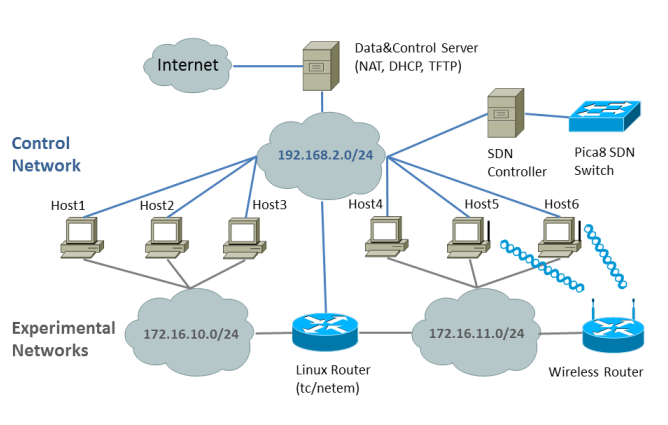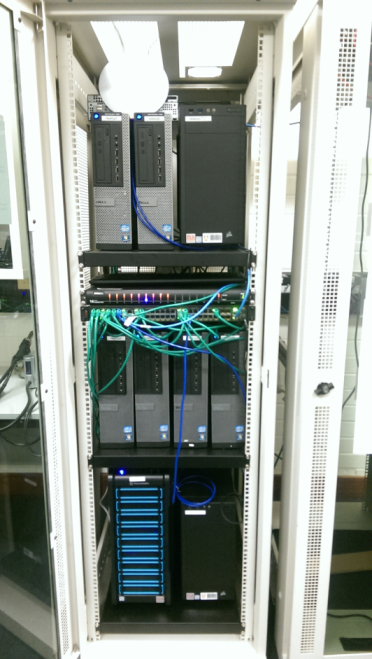TCP/SDN Testbed
We have constructed and operate a testbed to carry out experimental research in the areas of:- Improving the performance of the TCP protocol.
- Investigating and improving the performance of low-priority TCP protocols.
- Improving or developing new Adaptive Queuing (AQM) mechanisms.
- Experimenting with Software Defined Networks (SDN).
Our testbed comprises of a control server that also acts as NAT gateway for the rest of the testbed, six PCs used as traffic sources and sinks and one PC used as router. All PCs are equipped with two NICs, one connected to a control network through which experiments are initiated, the other connected to one of the two experiment subnets. There is also a wireless access point and two of the PCs are equipped with wireless NICs to allow experiments over IEEE802.11 wireless LANs.
All devices are connected to a Pica8 SDN switch and another PC serves as SDN controller, which allows us to experiment with SDN using actual commodity SDN hardware. On the controller we can run various SDN controller software packages, for example NOX/POX or Open vSwitch.
To carry out automated tests with various configurations, all PCs are installed as multi-boot machines with Linux, FreeBSD and Windows OS. On the router we mainly run Linux and use the tc framework to configure arbitrary bottleneck bandwidths queuing disciplines. The tool tc/netem is used to emulate arbitrary delay and loss conditions to simulate various Internet path conditions. The TEACUP software is used to configure and execute the experiments.
The following picture below shows a logical diagram of the testbed.

The following picture below shows picture of the actual testbed, which fills an entire rack.

If you are interested in this research or the TCP/SDN testbed, please contact Sebastian Zander (s.zander@murdoch.edu.au).